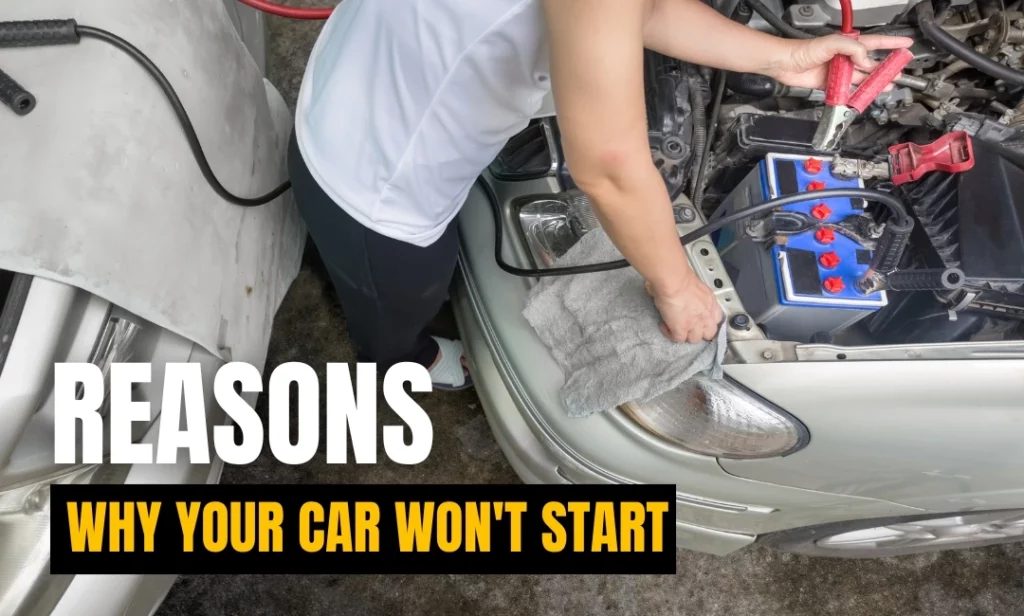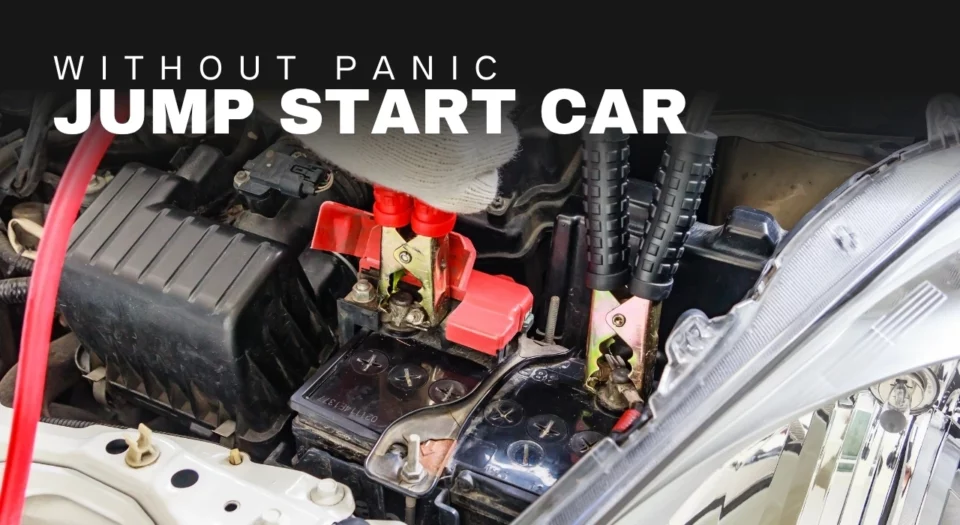Have you been in situations where you are running late or alone in a parking lot, and your precious car won’t start? If so, you totally understand the pain and frustration that follows. Jump-starting your car is the best way to get out of this situation. However, not many drivers know how to jump start a car with cables, stating it to be complicated or risky. The truth? It is not as long as you have the right equipment, you know the right way, and you are being careful.
This guide will help you revive your car battery using your jumper cables. We will walk you through exactly what to do if stuck with a completely shutdown car, and that too safely, quickly, and confidently.
In addition to the textbook steps we will also answer the questions that most how-guides miss, such as how many amps you really need, what to do if you are alone, and how hybrids or EVs are different.
Let’s not waste any more time and jump in to get your car back on track.
Reasons Why Your Car Won’t Start Before You Jump It

Before you reach for cables or a battery pack or simply go into a frenzy, first make sure that the issue is actually a dead battery. The battery of your car is the problem if:
- You keep hearing a clicking sound every time you try to start the car, but the engine won’t crank.
- The interior lights, along with the dashboard and radio, are either dim or completely dead.
- You accidentally left the dome light, headlights, or another accessory on for hours.
- Your car battery is older than 3 to 5 years with no regular upkeep.
However, as a car owner, you also need to understand that not every no-start situation with your car is due to a battery-related problem. If you hear no engine cranking but all lights and electronics seem normal, it is due to a bad ignition switch. Also, if there is grinding noise or repeated cranking, it is mainly due to fuel system issues.
I would personally recommend that you to examine your car battery closely. If it is swollen, leaking, or has a rotten egg smell, it is highly dangerous to jump start your car.
What You Need To Safely Jump Start A Car By Yourself
To effortlessly jump start your car, you will need a few necessary tools, mainly a good set of jump cables, ideally around 8 to 12 feet long. If you are on your own with no person or car in sight to help, a portable battery jump starter is a great backup. It can easily start most cars if it delivers at least 400 to 600 amps.
I own one, and it has helped me and my 2015 Toyota Camry in alone situations quite a lot. However, for bigger vehicles like trucks or SUVs, you may need a device with 800 to 1000 amps output. To know for sure, check your vehicle’s manual or battery label to know the exact figure.
It will also help if you keep a pair of gloves and a flashlight in your car. Gloves can protect you against sparks, and flashlights can make those nighttime jumps easier and safer.
Ideally, jumper cables work well with another car, whereas battery packs are independent soldiers. Either way, both are the right tools and can help you when your battery gives out.
How To Jump Start A Car With Cables
To jump start your car with another car, the first thing you need to do is park both cars close but not touching. Turn off both engines and connect one red clamp to the dead battery’s positive terminal and the other to the donor car’s positive terminal.
The next step is to attach the black clamp to the other car’s negative terminal and the other one to the metal surface on your dead battery, not the battery itself.
Start the helping car and let it run for a few minutes. Then, try starting your vehicle. If it works, keep your car running for at least 15 minutes. Proceed with removing the cables in reverse order once your engine is stable.
This method works well if you have help. However, be cautious, as incorrect connections can cause serious damage. Also, if your ride won’t start after a few tries, there may be more serious mechanical issues.
Jump Starting A Car Without Another Vehicle
If you are on your own and have no second car to help you, a portable jump starter is your savior. Start by connecting the red clamp to your battery’s positive terminal and the black one to the clean metal surface on your engine block or frame.
The best thing about this tool is the most modern ones will warn you if the connection is wrong, adding a layer of safety. Once a safe connection is established, turn the device on and try starting your ride. If it works, leave the engine running and disconnect the clamps carefully.
Honestly speaking, I would recommend a portable battery jumper to all drivers, even if they own longer jumper cables. It is simply because these devices come in handy in winter and remote areas where getting help is not easy.
Is Jump Starting A Hybrid Or EV Any Different?
Not many drivers know it, but jump starting a hybrid or EV is different from gasoline or diesel cars. Most hybrid vehicles, like the latest 2025 Toyota RAV4, use high-voltage batteries (259V or 244.8V) with a 12-volt auxiliary battery.
However, you never jump start the high-voltage battery. You only jump the 12V battery, which powers the electronics and ignition of your car. Simply locate the auxiliary battery and follow the same jump start steps, red to positive and black to grounded metal.
However, in the case of fully electric vehicles, you can not do the same. These rides do not have a traditional starter system. Plus, their high-voltage lithium batteries are something you should never try to jump. Most EVs still come with a small 12-volt battery to power basic electronics, which you can jump if it is dead. Several professional mechanics and EV experts urge car owners to consult their owner’s manual before acting on their instincts.
Overall, you can jump hybrids and EVs (sometimes), but never go for the main battery. If unsure, always call for roadside assistance.
What Can I Do If The Jump Start Doesn’t Work
If your car does not respond even after a proper attempt, it indicates the issue lies somewhere else. Multiple attempts will only harm your ride, so avoid them.
You can start by double-checking your connections to rule out there was any problem from your side. Ensure the connections are proper with no loose clamps or corroded terminals (one of the most common reasons for jump failure). Examine the clamps to ensure they are touching clean and bare metal.
If everything turns out to be fine and your ride still won’t start, your battery is severely damaged. If it is older than three years or keeps draining frequently, replacement is the only solution.
However, if the battery is new, then there could be other parts causing the problems, like a bad alternator, faulty starter, blown fuse, or even a locked-up engine.
In such a scenario, it is wise to call for help. A professional inspection of your car can tell you what needs to be done to get your ride in its prime condition.
Frequently Asked Questions
How can I prevent my car battery from dying?
Simply drive your car regularly, ensure battery terminals are always clean (no rust formation), and keep an eye out for battery-draining signs like dim headlights or slow starts. It is wise to get your battery tested during an oil change. This one small habit can help you catch issues early.
Can I jump start a car in rain?
It is safe as long as you are careful with the cables and your car’s electrical systems are designed to resist typical weather conditions. However, avoid the task if your car is stuck in an area with stagnant water around.
What happens if I connect the jumper cables in the wrong order?
If you put the clamps on the wrong terminals, it can cause sparks, blow a fuse, or damage the electronics of your car. Surely, some newer cars and jump packs have built-in protection, but there is no harm in double-checking your connections.
Can a completely dead battery be recharged?
A completely dead battery can be recharged as long as it is new or in good condition. If it is old, swollen, damaged or forming rust, it is wise to replace it.
Conclusion
Jump starting a car may seem intimidating to many, but with the right knowledge, it can be a breeze. If you know what to do, how to do it, and what to expect, you can handle anything from jumper cables to battery packs and even hybrids and EVs.
You no longer have to get drowned in the agony of a dead battery. With the right tools and accessories in the trunk of your car and all related crucial knowledge, you can take full control of the situation without any pain or guesswork.

